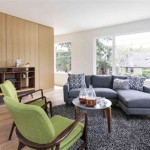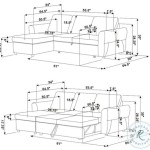Furniture Placement in a Room
Furniture placement plays a crucial role in determining the functionality, aesthetics, and overall ambience of a room. By strategically arranging furniture, you can create a space that is both inviting and practical. Here are some key principles to consider when planning your furniture placement:
1. Establish a Focal Point: Every room should have a focal point, such as a fireplace, a large window, or a piece of artwork. Arrange your furniture to draw attention to this focal point and create a sense of balance and symmetry.
2. Define Activity Zones: Identify different activity zones within the room, such as a seating area, a dining area, or a workspace. Arrange furniture to clearly define these zones and ensure smooth traffic flow.
3. Consider Circulation: Leave ample space for movement between furniture pieces and allow for easy access to doors, windows, and other features in the room. This will prevent a cluttered and cramped feeling.
4. Create Conversational Groups: In seating areas, arrange furniture in a way that encourages conversation. Place sofas, armchairs, and ottomans facing each other to create intimate seating arrangements.
5. Utilize Space Effectively: Make the most of the available space by using furniture pieces that are proportional to the size of the room. Avoid overcrowding or underfurnishing the space.
6. Layer Different Heights and Textures: Introduce depth and interest to your room by layering furniture of varying heights and textures. This creates a more visually appealing and dynamic space.
7. Consider Light and Windows: Natural light can greatly impact the atmosphere of a room. Position furniture to maximize natural light and avoid blocking windows. Use lamps and other artificial lighting to supplement natural light in darker areas.
8. Incorporate Multifunctional Furniture: Choose furniture pieces that have multiple functions, such as ottomans with built-in storage or tables with extendable leaves. This helps maximize space and create a versatile room.
9. Experiment and Adjust: Furniture placement is not a set-in-stone process. Experiment with different arrangements until you find a layout that works best for your needs and preferences. Don't be afraid to adjust and refine your placement over time.

Vital Rules Of Bedroom Furniture Placement Tips E Architect

Furniture Placement In A Large Room How To Decorate

Small Bedroom Furniture Arrangement Guide Designcafe

5 Simple Decorating Rules For Furniture Placement Little Bowerbird

Furniture Placement Dilemmas How To Decorate

How To Arrange Furniture With A Floor Planning Tool
:strip_icc()/100185277-720ea7a9044a47ed96ed87d0b159b6a1.jpg?strip=all)
Living Room Layouts To Make The Most Of Your Gathering Space

How To Arrange Furniture 10 Basic Rules
How To Design An L Shaped Room The Living House

How To Arrange Living Room Furniture Calgary








